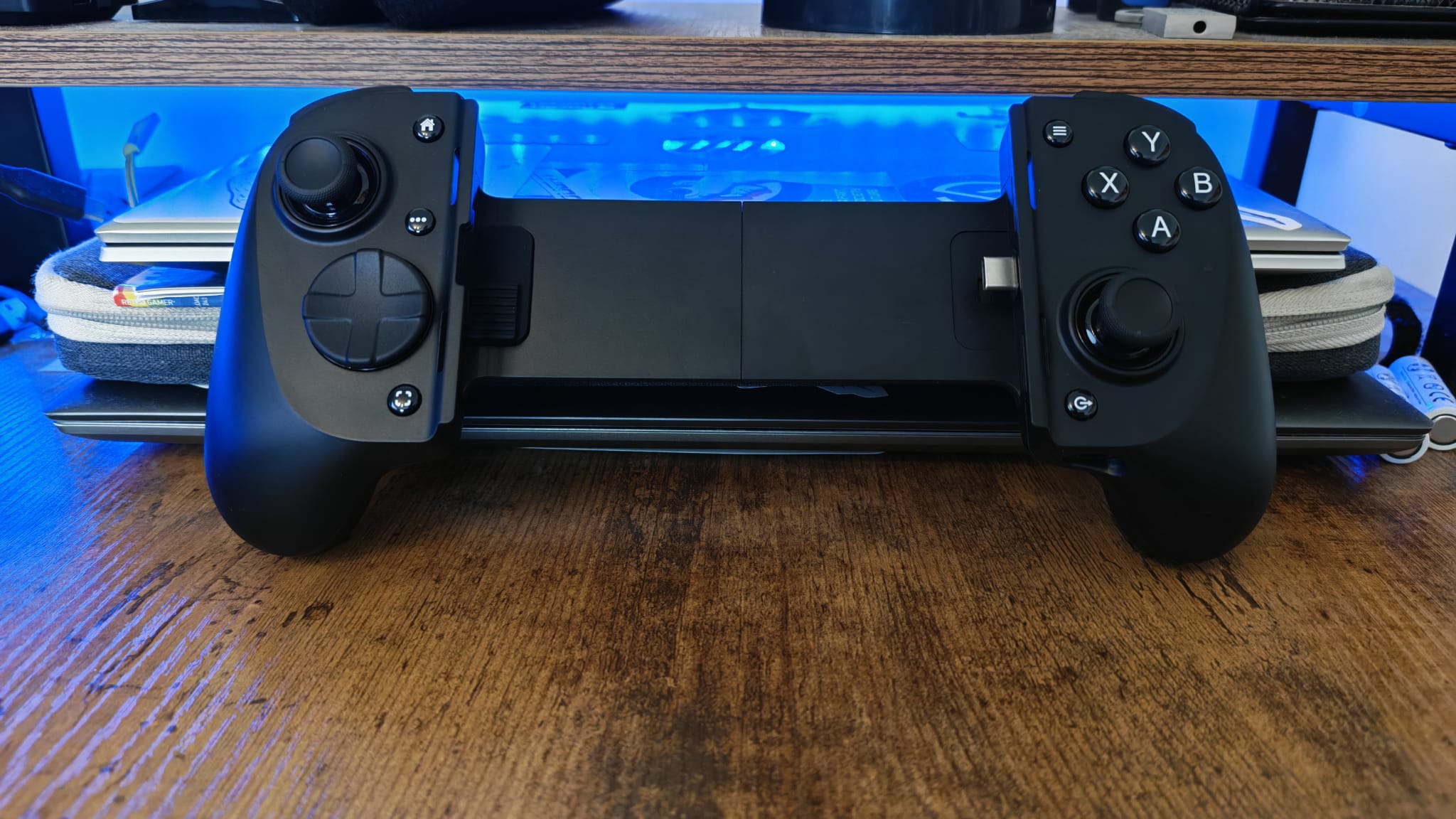
Razer’s controller division has some solid momentum behind it at the moment. Its recent redesign of the Wolverine line led to two of the best gamepads I’ve reviewed this year, and last summer, it came out with the Razer Kishi Ultra, one of the best mobile controllers ever made. What’s more, the Wolverine V3 controllers didn’t have the completely obnoxious prices we’ve seen from this brand before, signaling that a corner had maybe been turned. It hadn’t.
Razer is now back for more of the portable market, conveniently timed to upset the Backbone Pro and the launch excitement of the Switch 2. But how much could have really changed in a year?
No, I’m actually asking you: How much could have changed since the launch of the Razer Kishi Ultra? Besides a few updated design flourishes and an expanded range of size options, I’m having trouble working it out.
The new Razer Kishi V3 Pro I’m testing has made tiny adjustments over last year’s Kishi Ultra, and even though I’m a big fan of the physical improvements, the biggest issue was always its $149 price. For context, my favorite mobile controller on the shelves right now is still the GameSir G8 Galileo, because it outguns the Kishi Ultra, the Backbone, and all the others in terms of value for money at just $79.99.
Thankfully, pricing isn’t all doom and gloom. The Kishi V3 line includes a standard model, which only costs $99.99 - a real thorn in the paw of the original Backbone One and the Scuf Nomad. It’s bigger than the Kishi V2, it has back buttons, and it feels like the best option in the bunch. The V3 Pro is the one I’m testing, however, and although it has more functionality, I can’t pretend the small improvements remedy the $149 price we know from last year. Then there’s the Kishi V3 Pro XL for larger tablet devices, and its $199 price is just as unwieldy as the large tablets it’s designed for.
Design
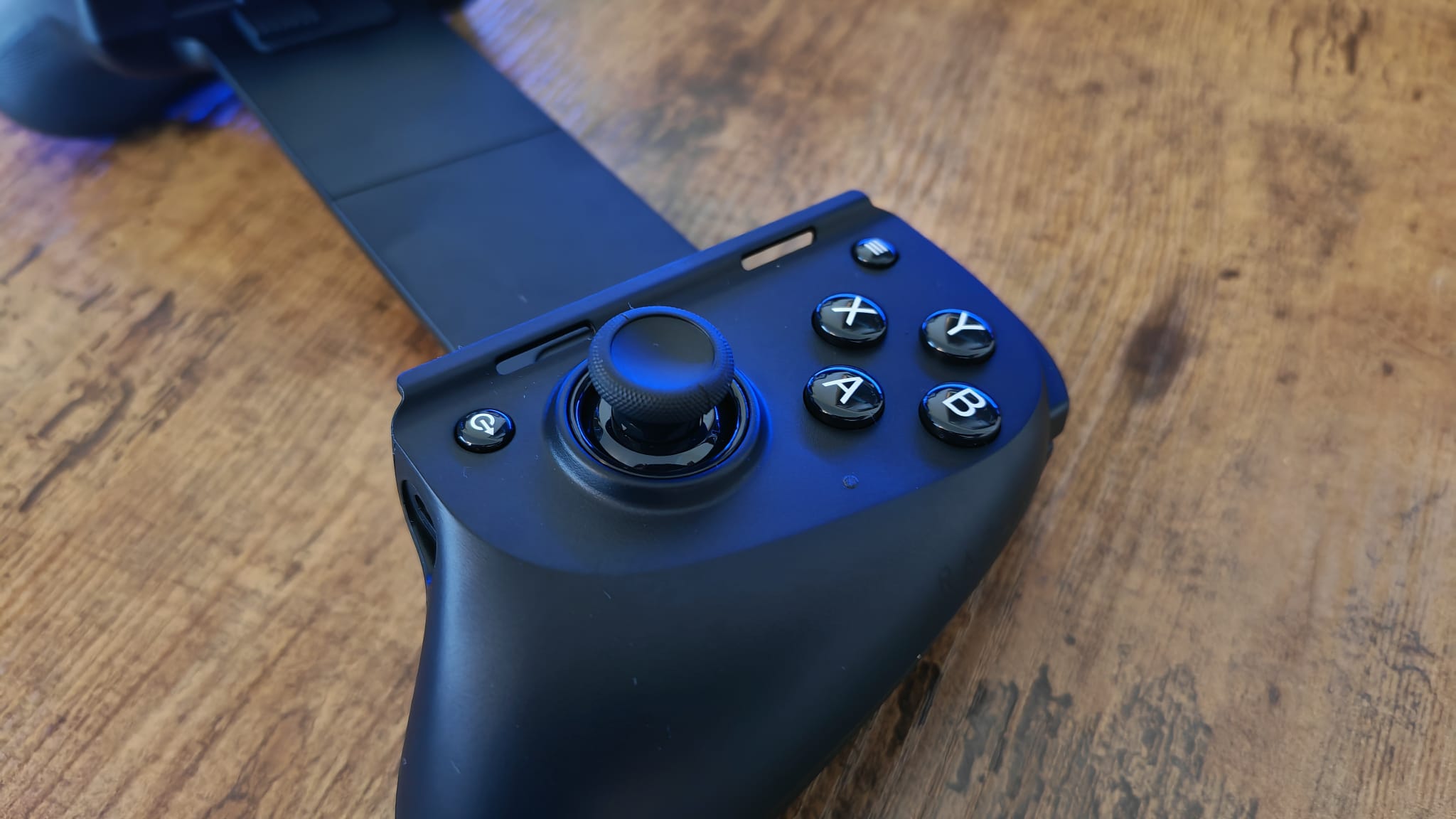
If you missed the Razer Kishi Ultra from last year, allow me to fill you in on the broad design strokes. The Kishi V3 line takes a much larger approach to the mobile controller market, essentially giving you full-sized controller grips and a less portable form factor, but a lot more comfort. I’m yet to try anything designed for mobile play that replicates a full-sized controller more than the Kishi Ultra, and now the Kishi V3 Pro.
The differences between last year’s model and this new one, though, aren’t exactly numerous. The two back buttons are an immediately noticeable addition, a broader spine to help cradle your phone feels more stable, and the RGB strips that framed the Ultra’s facial features are no more. Besides those, the dimensions, weight, and feel of the two controllers are virtually identical.
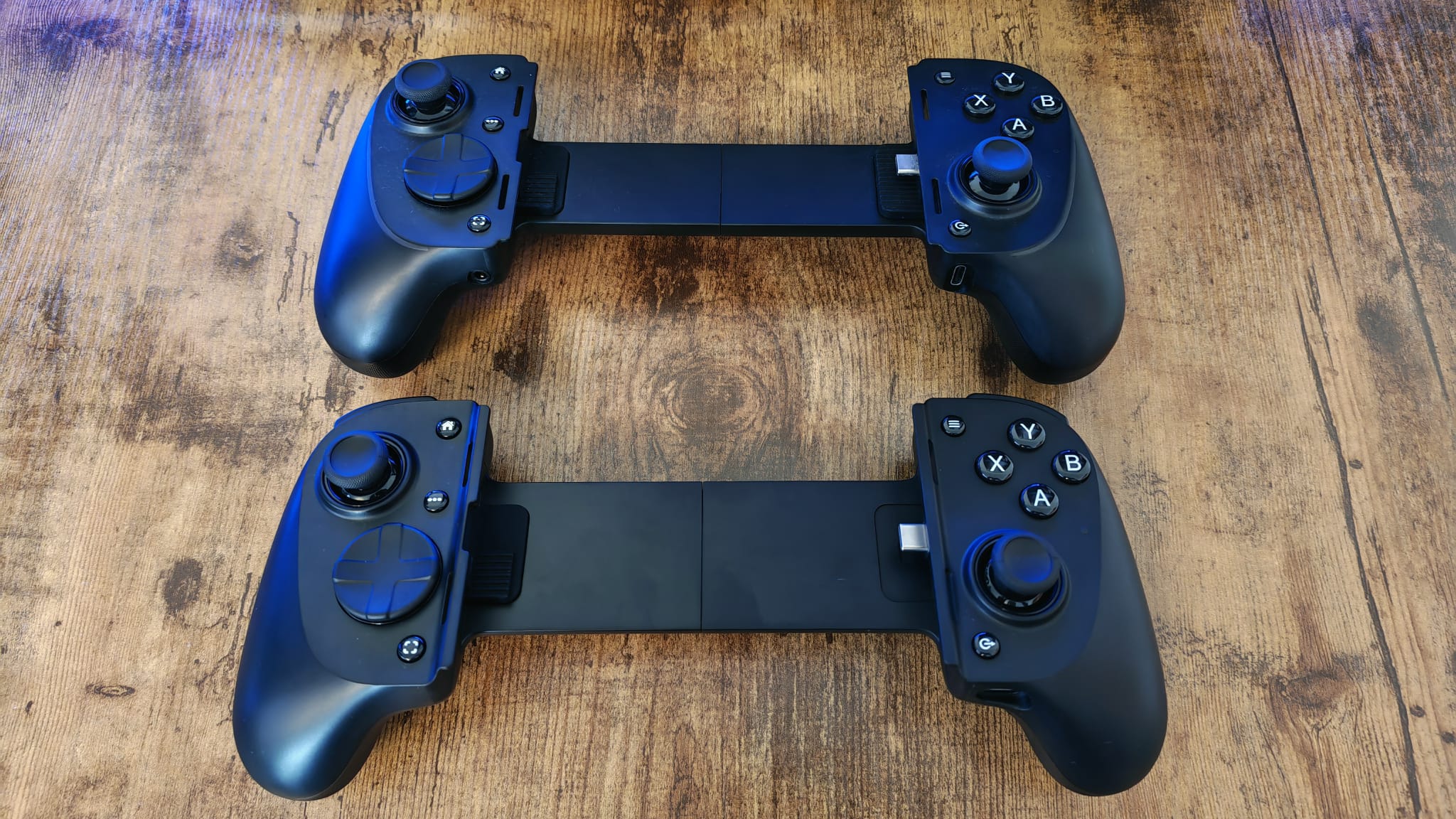

The Kishi V3 will fit and work with any Android or iPhone using a UCB-C connection. The V3 Pro will fit those devices, plus the iPad Mini, and any other USB-C gadget up to 8 inches. The XL model will only be for full-sized iPads and Android tablets up to 13 inches.
As great as the extra size of the Kishi V3 Pro is compared to other mobile pads, there’s a design flaw that totally undermines it. When you take a look at a regular, full-sized gamepad, you’ll notice that, regardless of whether it has asymmetrical or symmetrical thumbsticks, its face buttons and thumbsticks are positioned diagonally from one another. In other words, the buttons aren’t directly under the thumbsticks, like they are on one of the Nintendo Switch 2’s Joy-Cons, for example. Mobile controllers can often give you thumb cramp and discomfort because their facial components are vertically set. You have to completely flex your thumb and move it too far down to be comfortable for longer periods.
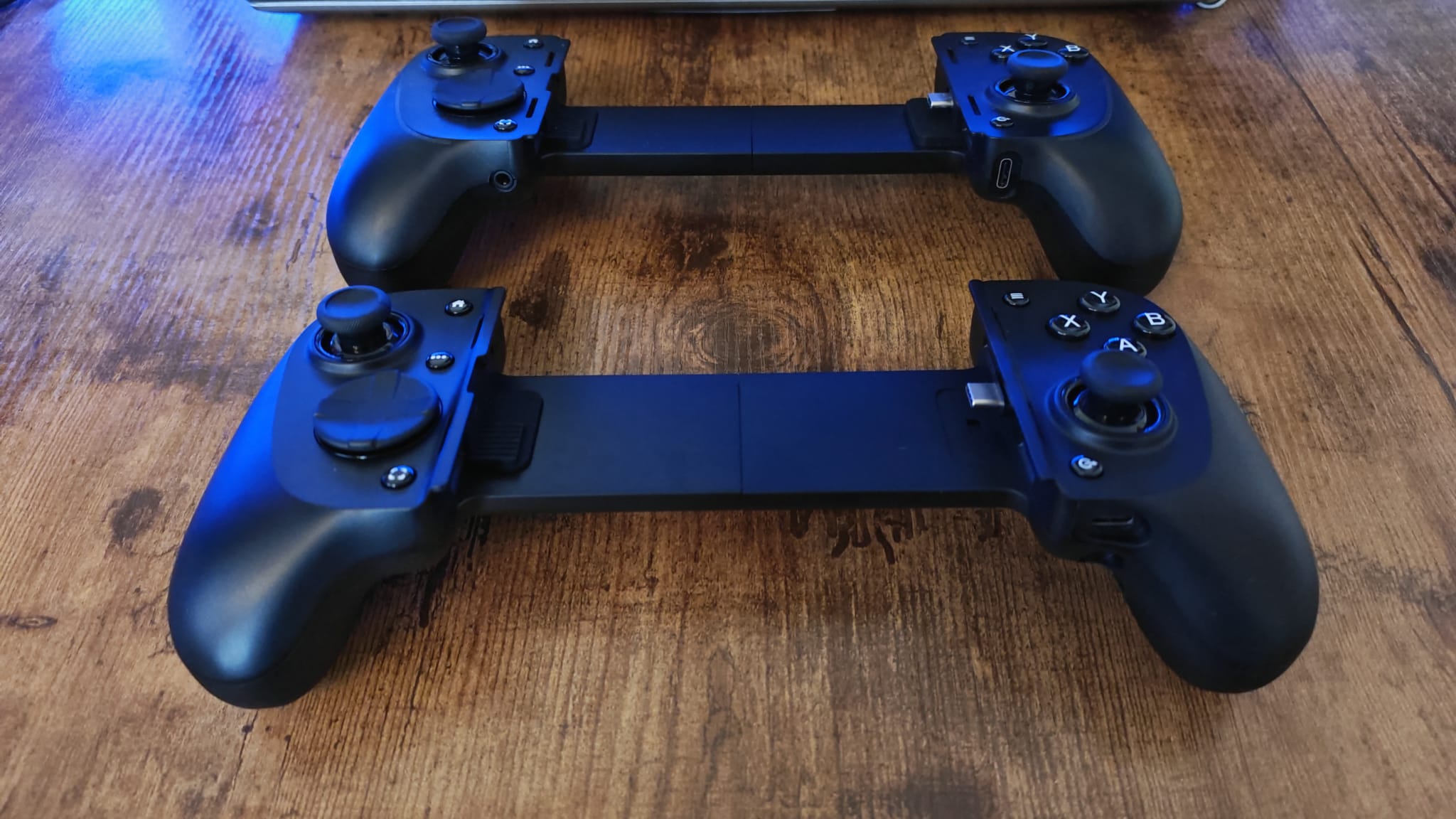
Symmetrical thumbsticks can go a long way to remedying that issue. With those, you’re not spending the majority of time playing with your thumb in that position; you’re only tapping buttons before moving it back to the stick. The Kishi V3 Pro, being larger, does use bigger buttons and thumbsticks than most typical mobile controllers do, but it doesn’t use its extra size to move that vertical separation far enough into a diagonal. The X button is still positioned directly above the thumbstick where, ideally, it’d be a little further over to the side. While your hands have a more natural hold on the Kishi V3 Pro thanks to girthy grips, it can feel just as annoying to use in longer sessions as smaller controllers, particularly if you’re playing aim-heavy games like FPS titles.
In my mind, a Kishi V3 Pro that improves upon the Kishi Ultra should have been screaming out for symmetrical thumbsticks like the Scuff Nomad has, like the Steam Deck OLED has, or like the Nitro Deck+ has. As it is, the Kishi V3 feels like it’s catering to players, like me, who have larger hands, but it doesn’t stick the landing because it doesn’t use the space where it counts.
Features
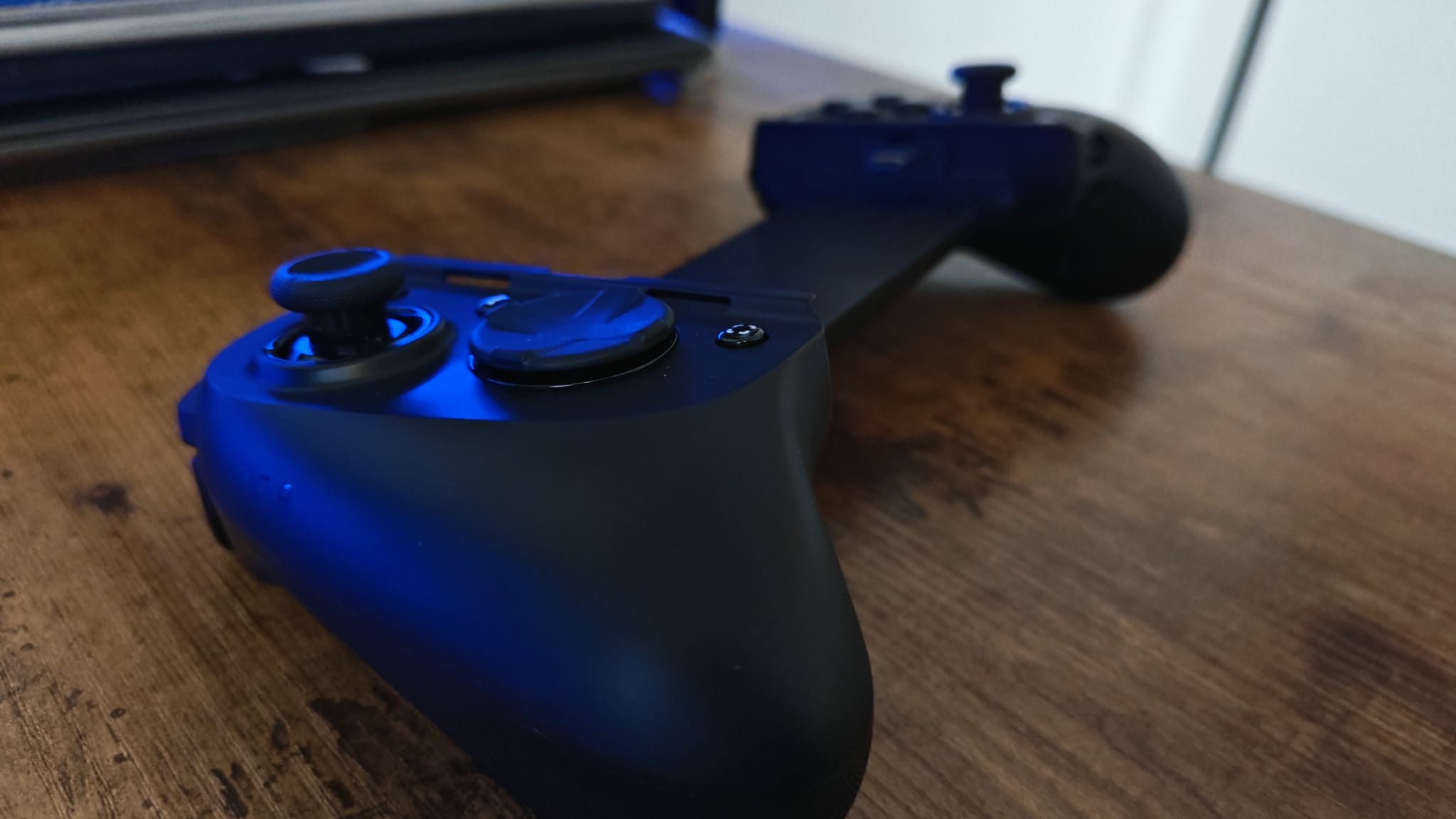
Perhaps the biggest win for the Kishi V3 line, in my opinion, is the inclusion of TMR thumbsticks. These are slowly emerging as the controller market continues into 2025, but for those who aren’t aware, they’re an advancement over the Hall sensor technology we’ve been seeing in recent years. They can chart even more coordinates on a grid, and do so at much faster speeds. In FPS games, that means more accurate aim, less latency, and an ongoing immunity to stick drift.
The tops of these thumbsticks can be pulled off and replaced with the two replacements in the box, which is a nice touch, and calls back to the GameSir X3 for those mobile players who still want a modular controller.
The Kishi V3 Pro sports the same additional bumper buttons as the Kishi Ultra and Razer Wolverine V3 Pro, but it now also has two back buttons, which I felt the Ultra from 2024 was screaming out for. That makes the Kishi V3 Pro one of, if not the only, mobile pad out there with four extra buttons to make use of. That’s a big win for competitive players who don’t want to lose out on functionality when they’re away from home.
Razer Kishi V3 |
Razer Kishi V3 Pro |
Razer Kishi V3 Pro XL |
|---|---|---|
Full-Sized but Compact Form Factor for USB Type C Phones |
Full-Sized Form Factor for Phones and iPad Mini |
Full-sized form factor for full-sized tablets |
Pro-Grade Console Controls and Ergonomic |
Pro-Grade Console Controls and Ergonomics |
Pro-Grade Console Controls and Ergonomics |
Full-Sized TMR Thumbsticks |
Full-Sized TMR Thumbsticks with Swappable Cap |
Full-Sized TMR Thumbsticks with Swappable Caps |
Quiet Tactile Buttons, 4-Way D-pad, and Hall Effect Triggers |
Mecha-Tactile Actions Buttons, 8-Way D-pad, and Hall Effect Triggers |
Mecha-Tactile Actions Buttons, 8-Way D-pad, and Hall Effect Triggers |
USB C, 3.5mm Audio, Pass Through Charging |
USB C, 3.5mm Audio, Pass Through Charging |
USB C, 3.5mm Audio, Pass Through Charging |
No haptics |
Razer Sensa HD Haptics |
Razer Sensa HD Haptics |
Expanded Case Compatibility |
Expanded Case Compatibility |
Expanded Case Compatibility |
Wired Play on PC and iPad |
Wired Play on PC and iPad |
Wired Play on PC and iPad |
Like the 2024 model, the Kishi V3 controllers also act as a PC controller thanks to USB-C connectivity. Plugging in works seamlessly with PC games, and this is actually how I did a big chunk of my testing. The same USB socket also has passthrough charging capabilities when in mobile play. Behind that, there’s room for a 3.5mm headphone jack.
Along for the ride is Razer’s own Nexus launcher, which is its answer to the Backbone app. This has some benefits to it, like the ability to record gameplay and share it, Virtual Controller mode, which lets you use the V3 for touchscreen-only titles on mobile, and remote play from a PC. All that, and it’s free to use, unlike Backbone’s app.
Razer Sensa HD Haptics feature in the V3 Pro and XL models, but not in the regular V3. Razer also pulled in its mechanical mouse click switches for the buttons, and everything from the back buttons to the bumpers, to the face buttons all have a satisfying, speedy click to them. Inside the box, you’ll find three sets of rubberized feet that provide compatibility with various iPhone and Android devices with or without cases.
Performance

I had a real feeling of déjà vu when testing the Kishi V3 Pro, and that’s how I know this new model doesn’t change enough from last year’s outing. The good news is that last year’s outing was pretty darn good. Its thicker, longer grips do a lot to make mobile play more comfortable during longer sessions than the Kishi V2. Its clicky buttons feel speedy and responsive, but it doesn’t miss out on feedback thanks to the Sensa HD Haptics. It is, as it stands, one of the best ways to enjoy mobile games in this day and age, especially if you have larger hands.
I’d like to give a special mention to the TMR thumbsticks. They do an amazing job of making this feel like a full-sized pro controller I’d be happy to use in competitive, sweaty Hunt: Showdown sessions. I’ve said it before, but the micro-adjustments, the sensitivity, it all feels so much better than any other stick module I’ve used in FPS games. The shape of the triggers is more slimline than a lot of full-sized controllers, which gives it a really distinct feeling.
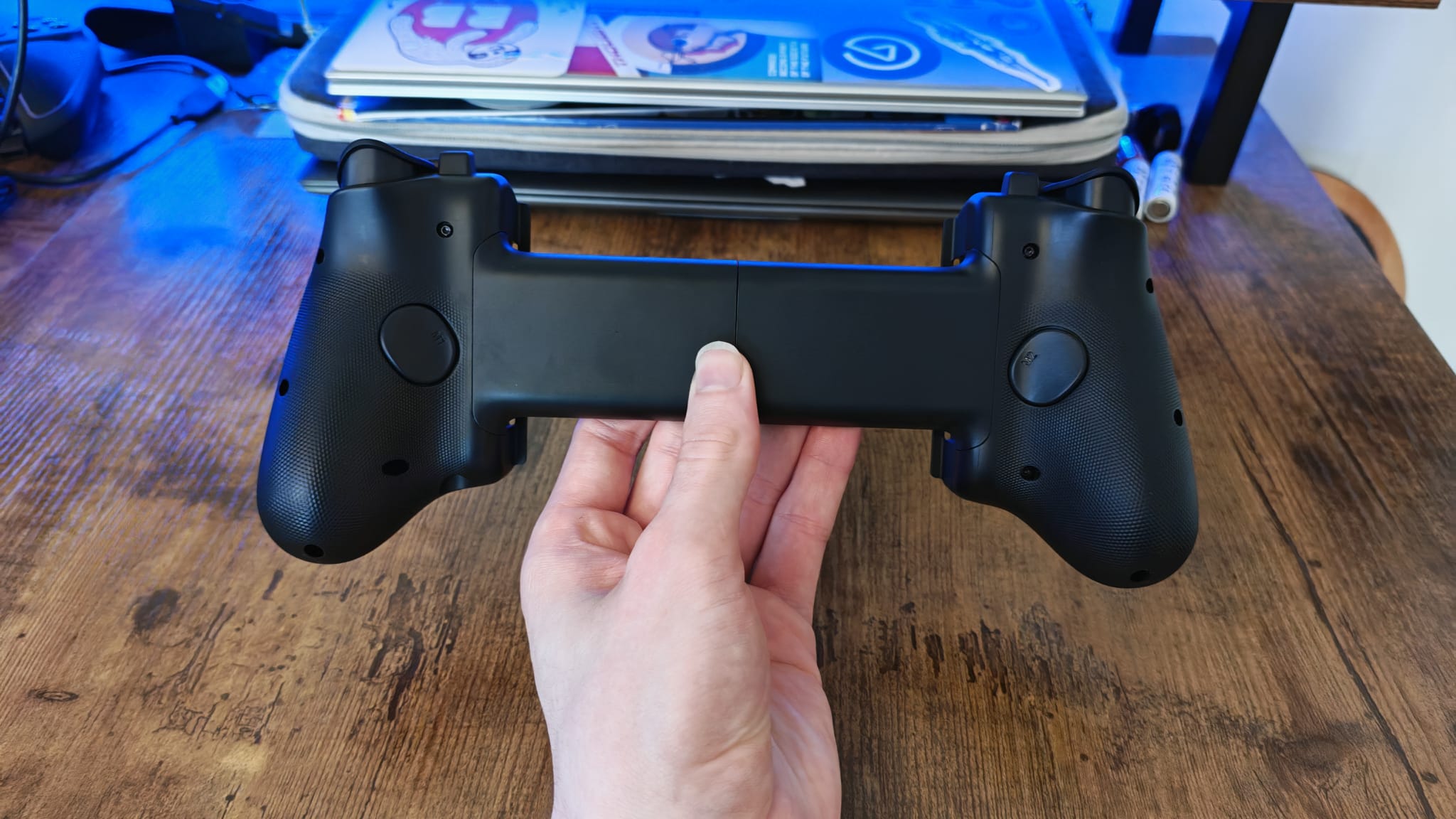
The crunchy haptics are excellent in games like Celeste, and give me all the immersive feedback I need. I still think the floaty D-Pad Razer uses is a little odd. It feels more like it’s sliding into the direction you’re pushing, and it’s the only part of the V3 Pro that feels spongy as opposed to immediately clicky and responsive.
I also enjoy that you don’t need to download an app to map the V3 Pro’s back buttons; the Nexus button doubles as a function button for this, and it streamlines your ability to play on the go.
Comfort is a big win here if you do lean on back buttons as heavily as I do. They remove a lot of the need for your thumbs to sit in that uncomfortable position I talked about earlier for long stretches of time. The well-rounded grips are exactly what some portable gaming devices are missing these days, and if you aren’t a fan of the flat back on the Switch 2, you’ll find this a lot easier to hold safely. On the other hand, using it as a PC controller will never not feel odd to me because its spine can’t shrink down or be removed. I still really enjoyed using it in this way, and there aren’t many mobile pads I’d be willing to actually spend time with on a stay-at-home device when I have other full-sized pro controllers at my disposal.
Should you buy the Razer Kishi V3 Pro?

The Razer Kishi Ultra has been dropping in price for the last six months or so. I’ve noticed more and more regularly that it’s been getting discount after discount, which to me signals that the brand could be struggling to shift units in a market where it’s charging $50 more than the majority of the competition. Then, just as Backbone launches a pro model that’s slightly larger and has back buttons for $169.99, Razer launches three new mobile controllers of its own. The regular V3 priced at $99.99 will no doubt be an excellent investment, but the inflated price of the two larger models is not suddenly justified because another brand decides to charge as much. If I were you, I’d wait until the V3 Pro inevitably comes down in price, because these big brands are soon going to realise (again) that they’re still charging far too much for what most people can afford to spend on a mobile controller.
It feels worthy of a slightly higher score than the Kishi Ultra, but Razer’s stubborn pricing throws a big green spanner in the works.
Let me be clear: The Kishi V3 Pro is great - it improves upon the Kishi Ultra, which was already a brilliant mobile controller. That’s why this review is difficult. It feels worthy of a slightly higher score than the Kishi Ultra, but Razer’s stubborn pricing throws a big green spanner in the works. It just doesn’t do enough to really feel like a new product. As a result, it seems like an excuse for Razer to slowly phase out the Kishi Ultra, once again charge a premium of $149, and now seem like the more affordable alternative to the Backbone Pro.
I had as comfortable a hold on the GameSir G8 Galileo as I do here. You also get a more intuitive USB-C connector that pivots, and shoving it in your bag is so much easier due to its smaller form factor. That best-of-the-best option can even Remote Play PS5 games, which is something I never managed with Razer’s. Oh, and did I mention that you still get two back buttons and save $70 versus the Kishi V3 Pro? If you really want the biggest and baddest mobile controller, pay for Razer’s, but I think the G8 still wins the all-rounder battle.
How I tested the Razer Kishi V3 Pro?
I put the Razer Kishi V3 Pro to work over a matter of weeks of testing. In that time, I used it for all my mobile gaming needs, as well as a big chunk of my PC play time. Naturally, I compared my experience closely to the Kishi Ultra controller, and used my experience of tracking its price for the last year to give an analysis in this review.
I played games across multiple genres for this review, including Hunt: Showdown 1896, Clair Obscur, Celeste, Dragon Ball: Sparking Zero, and the Hell is Us Demo.
For more on how we test controllers, check out the full GamesRadar+ Hardware Policy.
If you're looking for a controller for your dedicated platform, why not check out the best PS5 controllers, the best Xbox Series X controllers, or the best Nintendo Switch controllers?







